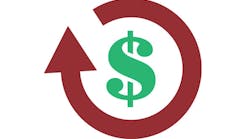When I visited Thermo Fisher Scientific's Asheville, N.C. plant a few months ago to confirm them as an IndustryWeek Best Plant, one of the projects they were working on was to become a zero landfill plant. When the plant established the goal in 2010, it was sending 30 tons per month to the landfill. Now they're down to 5 tons or less a month.
"We needed to do it with no net cost increase," said Phil McLellan, former director of operations at the plant. "We focused on reducing, reusing and recycling to the point where hopefully we could generate enough productivity improvements to pay for any costs."
See Also: Global Manufacturing Economy Trends & Analysis
That's a critical point as manufacturers live in a highly competitive world where you make a profit or you go away. But just how much profit might be left on the table from better use of resources received a startling examination at the recent World Economic Forum in Davos, Switzerland. There, attendees were briefed on what will become an increasingly important concept -- the circular economy.Most manufacturing, said Ellen MacArthur, a champion British sailor who is advocating the circular economy model, is conducted on a linear model, where we "take something out of the ground, make something out of it and then predominantly we throw it away." This "take, make and dispose" model needs to change, says MacArthur, if we are to provide sustainable economic growth for a burgeoning global population. A few quick facts cited in a new report from WEF, "Towards the Circular Economy: Accelerating the Scale-up Across Global Supply Chains," help explain the scope of the problem: • Three billion middle class consumers will enter the global economy by 2030, "driving unprecedented demand for goods and services." • Commodity prices rose by almost 150% from 2002 to 2010, erasing the price declines of the past 100 years. • Elements such as gold, silver, indium, iridium, tungsten and others that are essential to industry could be depleted within five to 50 years. As demand drives up the costs of increasingly scarce resources, the WEF study asserts, business leaders will need a risk management strategy that allows them to plan for revenue growth while becoming less dependent on using new materials. That's where the circular economy comes in. Think of it as recycling on steroids. At Davos, the WEF, MacArthur's foundation and McKinsey & Co. announced Project Mainstream, aptly named to try to move this idea out of discussion and into the heart of the world economy. The project is focused initially on a few materials used in large volume for which major companies could create profitable markets by redesigning products, reducing materials use and reusing materials after they are manufactured. Potential candidates include: • Paper and cardboard are already widely recycled but that material often suffers from quality loss and ink contamination. That degradation results in a loss of $32 billion in just the United States. • Polymers are "high potential" materials -- used in high volumes but collection and recycling efforts are fragmented. The report notes that "separating out the materials/maintaining their quality and purity is hard due to the high fragmentation of formulas, supply chains and treatment technologies." • Carbon dioxide and food waste are large volume byproducts that have potential for added value, particularly through emerging technologies. • "Future blockbusters" include 3-D printing, which improves material productivity, and bio-based materials that can be completely recycled. The circular economy involves not just using resources more efficiently but creating new market systems and ways of doing business. For example, Philips actively recycles lamps in the European Union but it also has turned lighting into a service. Rather than simply sell customers bulbs, it sells them a certain number of lumens. This gives Philips more control over the product at the end of its use.
| Learn which manufacturers are early adopters for the circular economy at iw.com/circular-economy. |
What's at stake in establishing a circular economy? WEF says the four to five initial projects could net $500 million and create 100,000 jobs as well as eliminate or productively use 100 million tons of waste within five years. With broader adoption, says MacArthur, materials cost savings could exceed $1 trillion by 2025, net the materials costs incurred during reverse-cycle activities.





